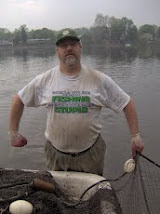FOR JEFFERSON
Consider the
importance of a group of islets in the middle of the Gulf of Mexico, 70 miles
from Key West. Barely rising out of the turquoise water the Dry Tortugas are
integral in many ways. First sighted by Ponce de Leon in 1513, yeah that youth
guy, it was aptly named Tortugas for the amount of sea turtles found here. The
sea turtle proved to be an important food source for these early sailors, so,
on the maps at the time they labeled this collection of islands, Tortugas, Spanish
for turtle. The “dry” part came later as there was no fresh water to be found.
Lots of turtles but no water. Also, the Dry Tortugas rise abruptly from the sea
and is a deep-water anchorage providing a natural safe harbor for ships to
resupply, do repairs and ride out storms.
Though
this is a remote cluster of islands, it was integral to the fledgling United
States. The Dry Tortugas are at the southern end of the world’s 3rd
largest coral reef. The largest is the Great Barrier Reef off the coast of
Queensland, Australia and the second is off the coast of Belize. The Florida
Keys stretch all the way north to Biscayne Bay and to sail safely in open water
to catch the Gulfstream ships had to pass by the Dry Tortugas. Controlling this
point secured all shipping from the Mississippi River interior of the United
States; America’s heartland; to the rest of the world. If a mighty naval power wanted
to cripple the U.S. they would control this crossing point at the Dry Tortugas,
disrupting commerce and using it as a staging point to attack anywhere along
the gulf coast. Because at the time we didn’t have a strong navy the government
commissioned a massive fort on Garden Key, which would take up 85% of the
island and capable of being self-sustaining for two years. This massive masonry
structure was begun in the 1840’s, worked on for 30 years, but never fully completed.
It still proved to be a powerful deterrent. The fearsome display of weapons
from the fort were never fired in anger, but showed America’s strength and eagerness
to protect itself. Fort Jefferson was a link in a chain of coastal forts that
stretched from California to Maine.
During
the Civil War Fort Jefferson served as a prison camp, mostly for Union deserters
and its most famous prisoner was Dr. Samuel Mudd, the physician who set John
Wilkes Boothe’s leg after he broke it while assassinating President Abraham
Lincoln.
Now part
of the National Park Service, all this history of the Dry Tortugas and Fort Jefferson
is a two-hour ferry ride from Key West and had been on a wish-list for me ever
since I first read about it. Janet never heard of this fascinating place, but
once I told her about it she was equally intrigued and so we made reservations
on the Yankee Freedom III, a high-speed catamaran that makes the trip in a
little more than 2 hours. Our passage included all park fees, breakfast and
lunch, snorkeling gear and a tour of the fort. On the return trip, they sold
inexpensive alcoholic drinks. The interior cabins of the ship were
air-conditioned and the crew was professional and accommodating. Private boats
are able to dock and there is a seaplane service from Key West.
 |
| LAND ACCESS TO BUSH KEY |
There is
primitive camping on the island, limited capacity and campers are required to bring everything with them, including water. There are no bathroom facilities on the island.
When we arrived the Yankee Freedom III was the commode for everyone for our
duration. We were on the island for four hours. We left Key West at 8 am and got back around 5 pm.
After
taking a short tour and walking on the top tier of the fort we walked along the
moat wall of the fort and marveled at the nesting birds on Bush and Long Key.
The shape of the islands is capricious with winds and storms, and Bush Key was
currently accessible by land, but closed because of the nesting birds. Bird
watching is an active pursuit on the Dry Tortugas and several people got off
the ferry with binoculars in tow.
We
started snorkeling from the south beach with the idea of making our way around
the fort to the north side. We’re somewhat spoiled with our recent diving
experiences, and the area around the south beach was not that interesting though
we did see a Conch zipping through the grasses. The wall along the north beach sprouted
a beautiful array of purple fan coral. The water is clear and so many shades of
blue and turquoise that the beauty is stunning. We watched pelicans dive like
darts after fish and birds digging in the sands and squawking madly.
Passage on the catamaran was not cheap, approximately $350 for the two of us and parking near the pier was $32 for the day, but the experiences of the day were unique. Janet had a $6 Pina Colada on the return. Breakfast was boiled eggs and ham, cereal yogurt and coffee and juices. We skipped lunch.





































No comments:
Post a Comment